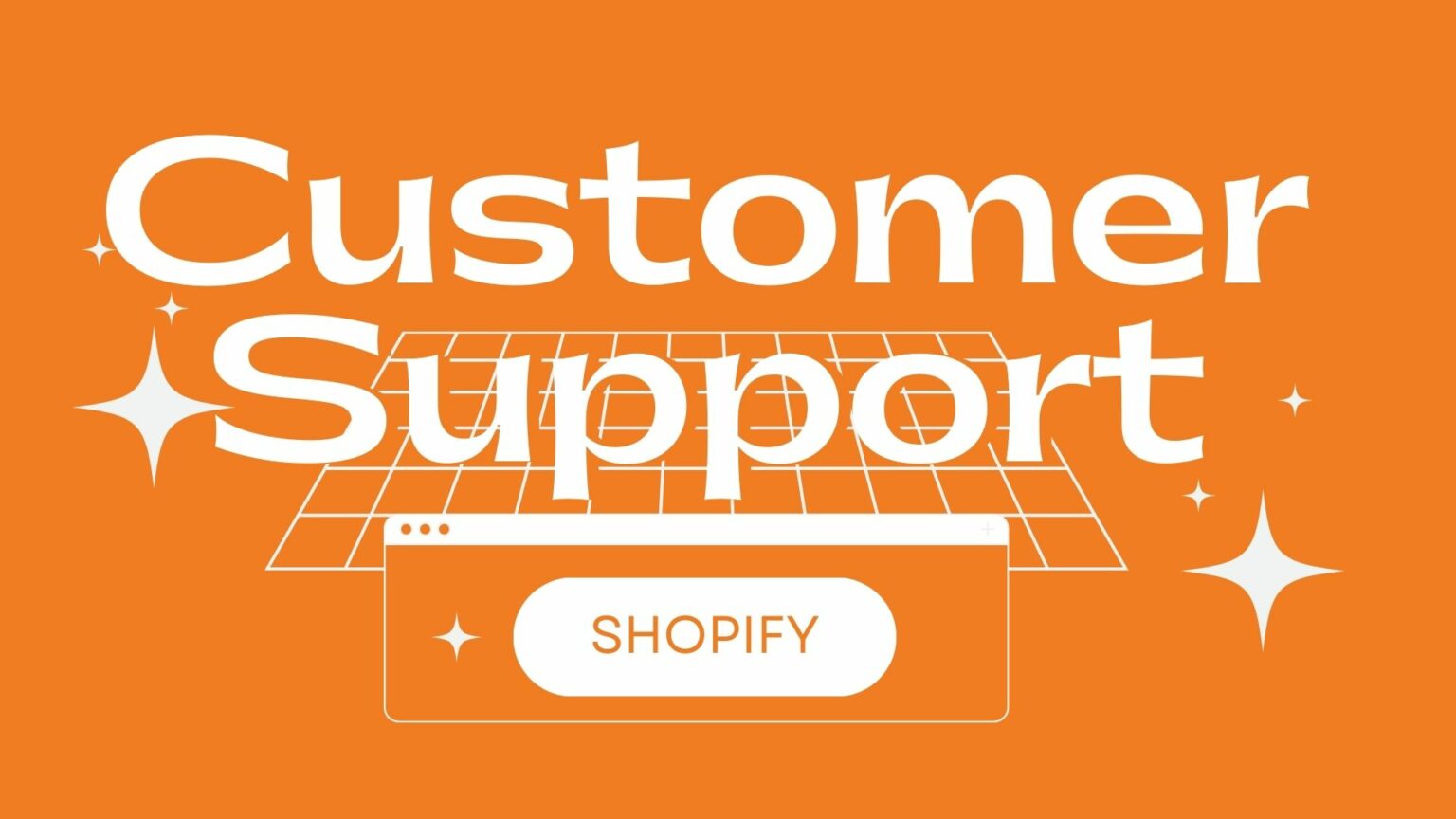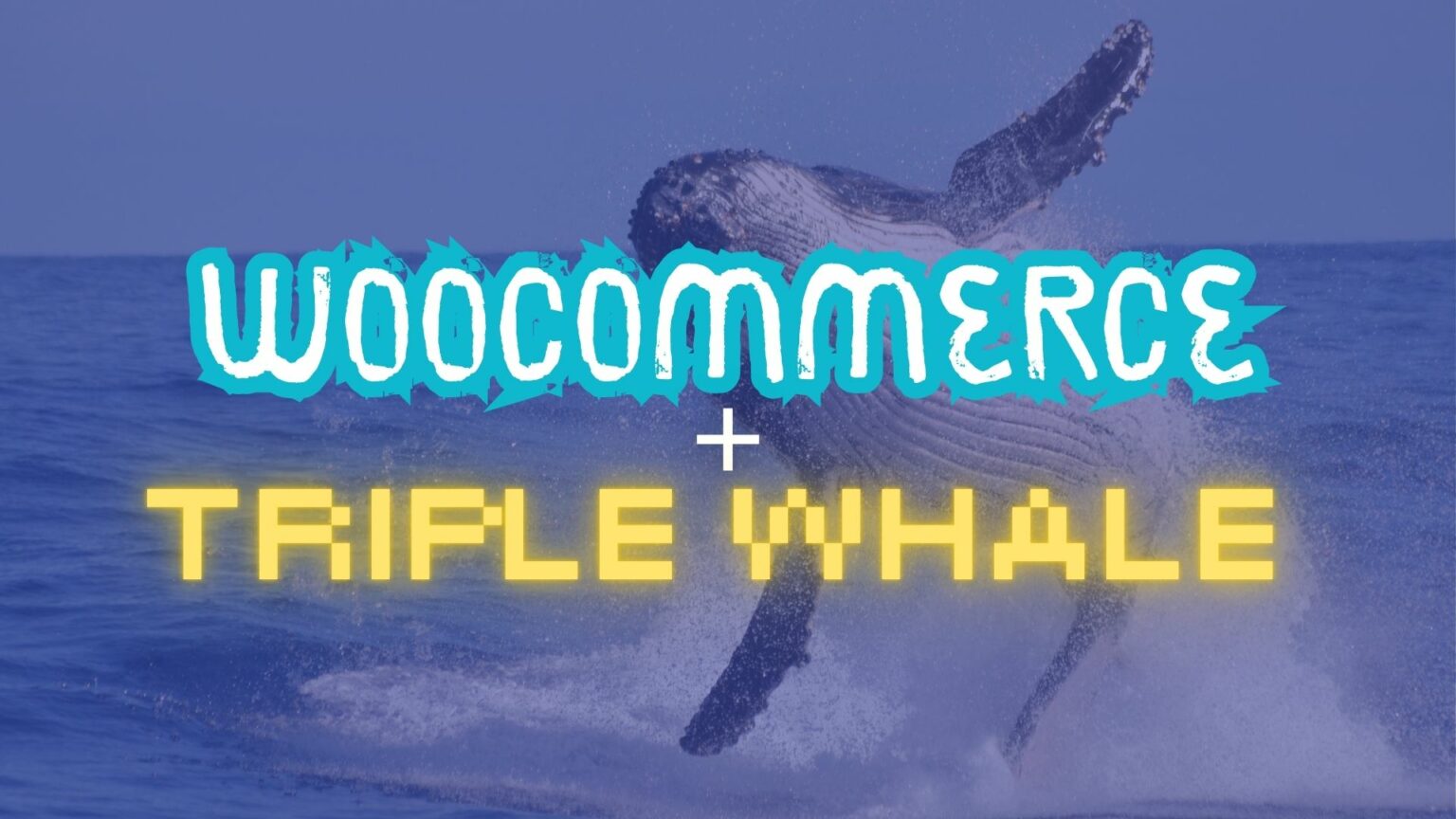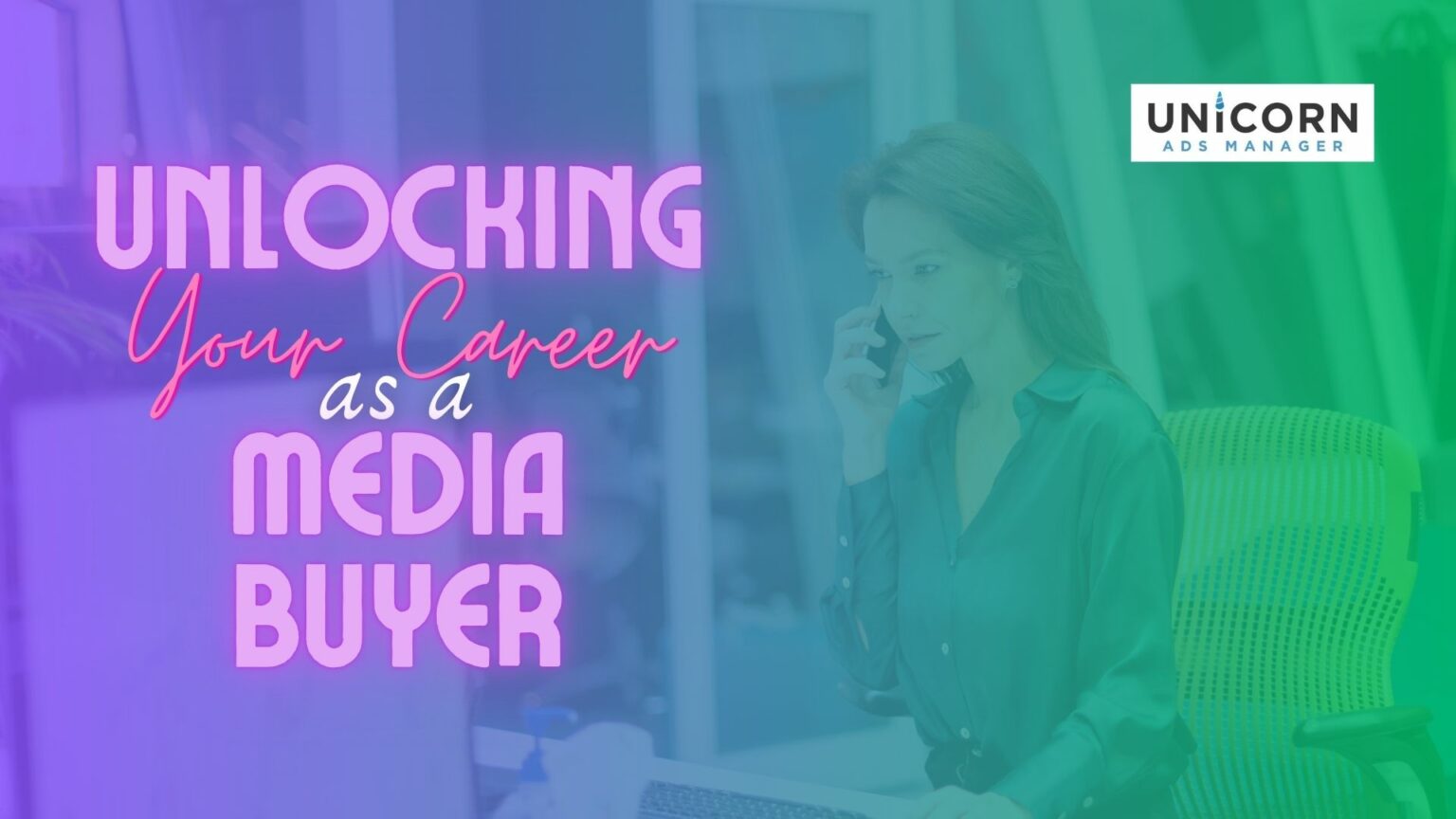
Mapping Your Buyer's Journey with Email for More Sales
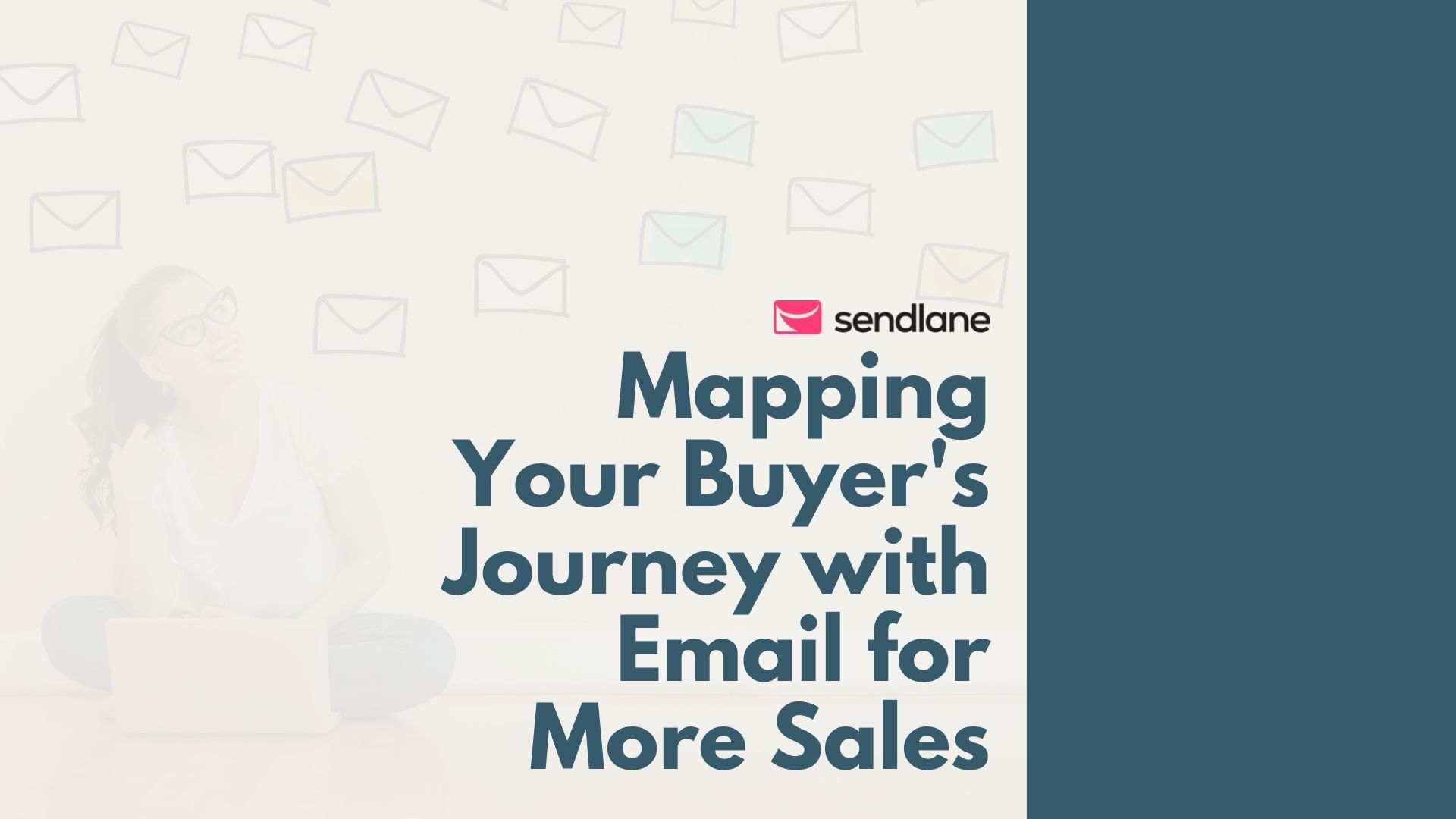

Instead of thinking like buyers, too many marketers think like… well, marketers.
If you really want to sell effectively, though, you’ll need to create a cohesive customer experience — one that makes sense from the first moment someone sees your brand to the minute they convert.
That’s why the buyer’s journey is so important.
Understanding the stages of the buyer’s journey makes it easier to decide what messages and tactics you should implement and when. And once you understand it, you can apply the buyer’s journey to your email marketing campaigns and transform leads into prospects — and prospects into customers.
3 Stages of The Buyer's Journey
Each stage of the buyer’s journey represents your prospects’ mindset when they’re interacting with your business. And while you can get extremely detailed with this model, we’re going to stick with the three most common stages:
- Awareness: Your prospects are introduced to your product or brand for the first time
- Consideration: Prospects who have shown interest in your offer and are eager to learn more, including comparing your product to others in the marketplace
- Decision: Your prospect decides to make a purchase and converts
Not enough marketers step back and consider this big-picture version of the customer experience.
But if you already have emails and other content to reach your customers, you probably just need to identify which collateral fits into each stage.
Applying the Buyer’s Journey to Email Marketing
Email marketing is essential to ensure that your customers keep moving through these stages.
By creating an email marketing funnel, you can create messages that speak to each of these steps. And with the right automation in place, you can nurture your audience and still have time to focus on other projects.
Defining your customer journey and automating your email lead nurturing process go hand-in-hand, and it’s easier than you might think. Below are the key action items for optimizing the buyer’s journey for eCommerce.
1. Awareness
At the awareness stage, people are likely finding you through top-of-funnel content like blog posts, SEO, or social media. In other words, you can’t assume that they know anything about your brand or your offer.
That’s why you need to make a good first impression and encourage your prospects to join your email list.
Others who find you via word-of-mouth or an ad might still be in browsing mode. They know what you sell, but don’t yet know why they should become customers.
To get first-time visitors onto your email list, just ask! Specifically, add email opt-in opportunities on your landing and product pages.
In this example, homesick offers exclusive content and pre-launch pricing if you opt-in. Attaching value to your email acquisition strategy in this way makes the transaction more enticing.
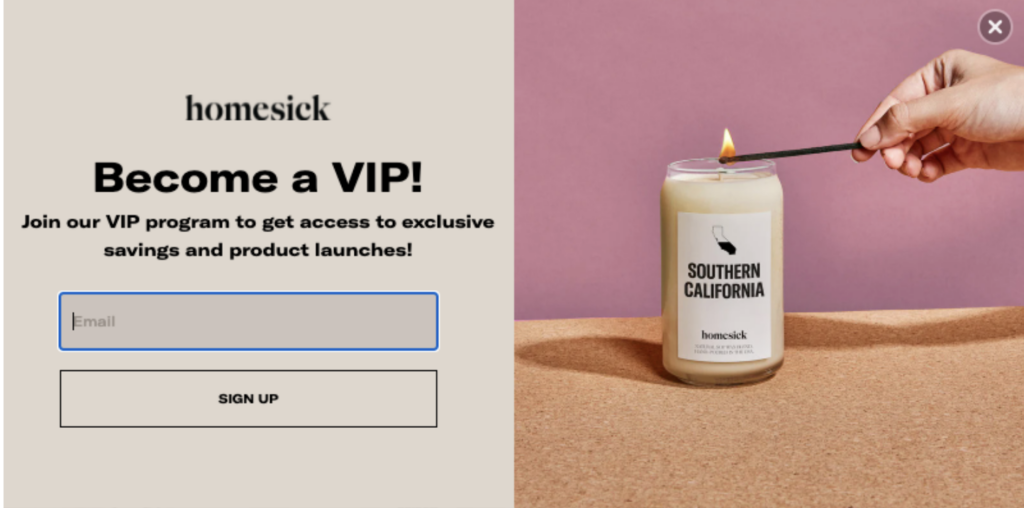
Pop-ups are another option for grabbing a visitor’s attention. Again, you’ll want to provide a meaningful incentive to encourage sign-ups.
In the example below, Legends offers new subscribers and first-time buyers a discount. For prospects in the awareness stage, this could be the benefit that leads them to the next step on your buyer’s journey.
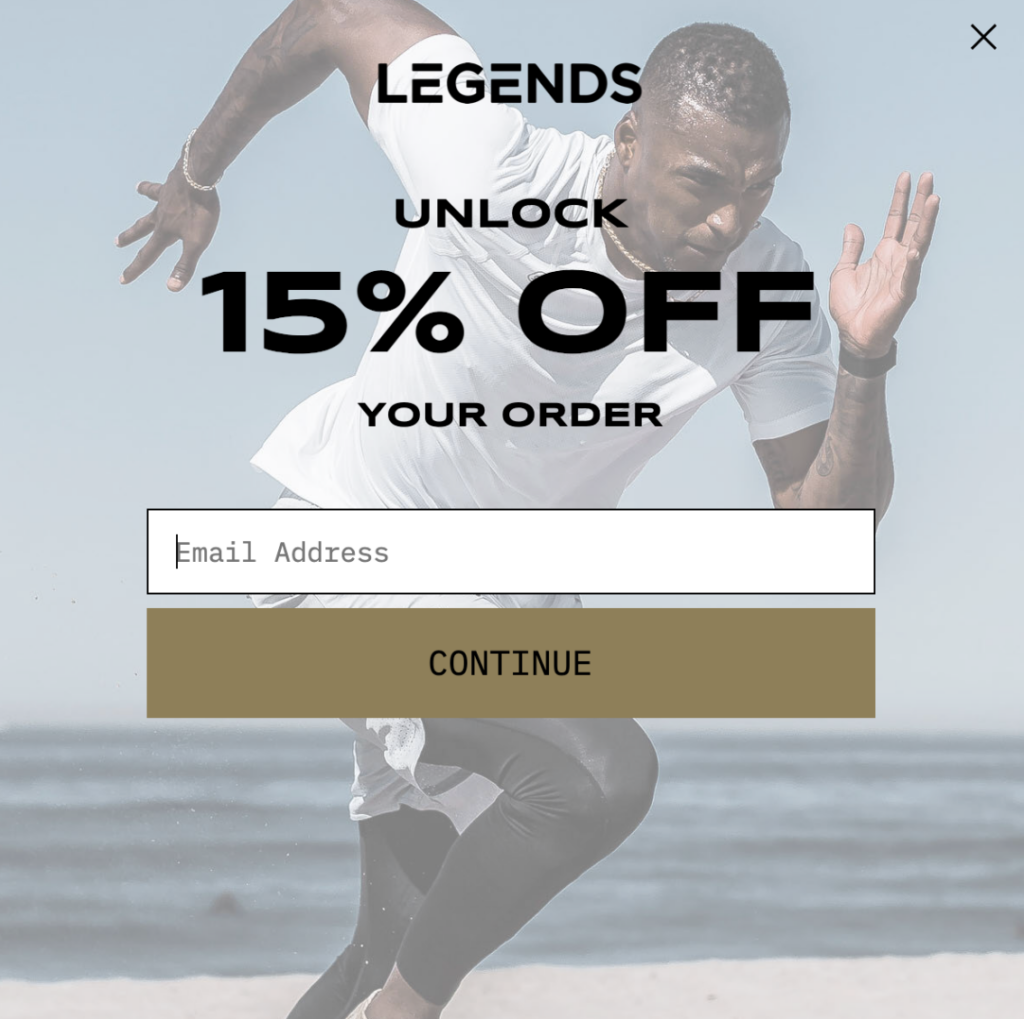
Similarly, Nectar Sleep entices sign-ups with a limited-time offer. These “now-or-never” pop-ups are ideal for product-aware customers who are still exploring their options.
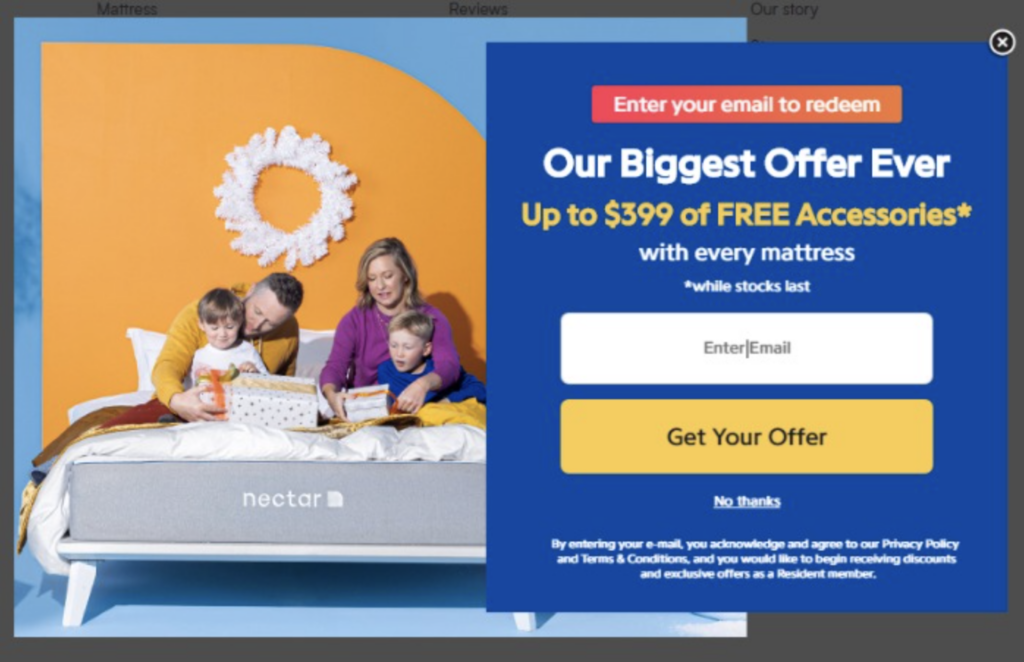
Quizzes & Welcome Emails
Interactive forms and quizzes are another effective way to nurture prospects in the early stages of the buyer’s journey. Warby Parker does this brilliantly:
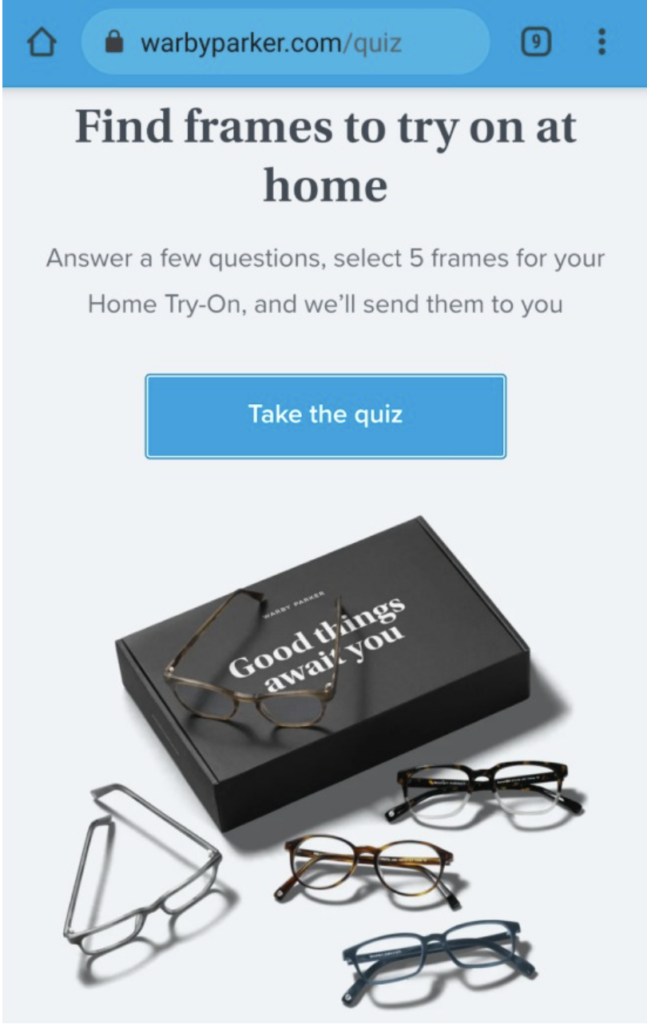
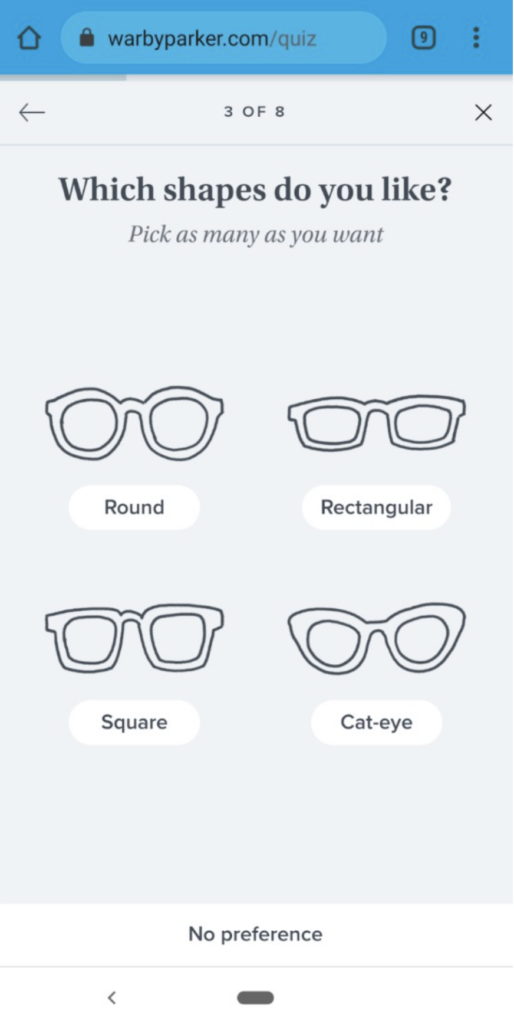
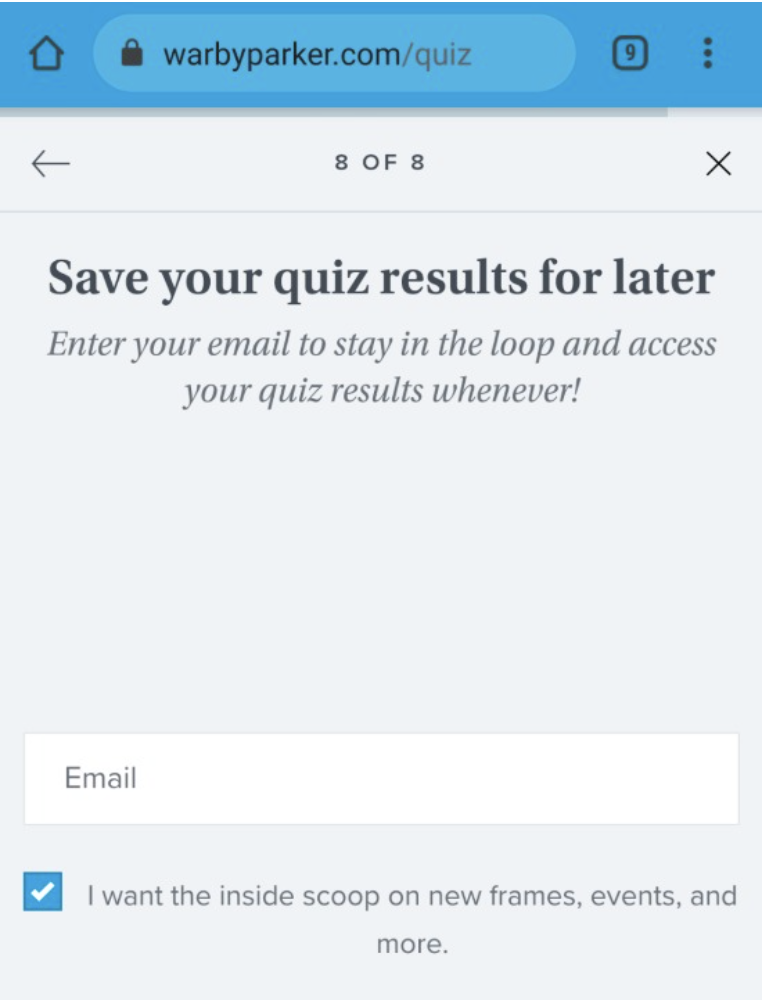
Effective product quizzes don’t just get email addresses — they teach your prospects about your product and give you important user information that you can use for more targeted marketing later.
Your welcome email represents your opportunity to get people into the decision stage. Simply put, you need to highlight your brand’s personality while also inviting people to check out what you’re selling.
This email from cozy earth is a prime example, simple yet personable, with a special discount tacked on at the end.

2. Consideration
Once you have a prospect’s email, you’re onto the consideration stage.
At this point, you need to nurture your subscribers and get them ready to make a purchase. In other words, you’ll need to strike a balance between building trust and opportunities to convert.
Since you’re not going for the hard sell (yet), provide more information about your brand and the customer experience prospects can expect. This email from Supergoop! does just that:
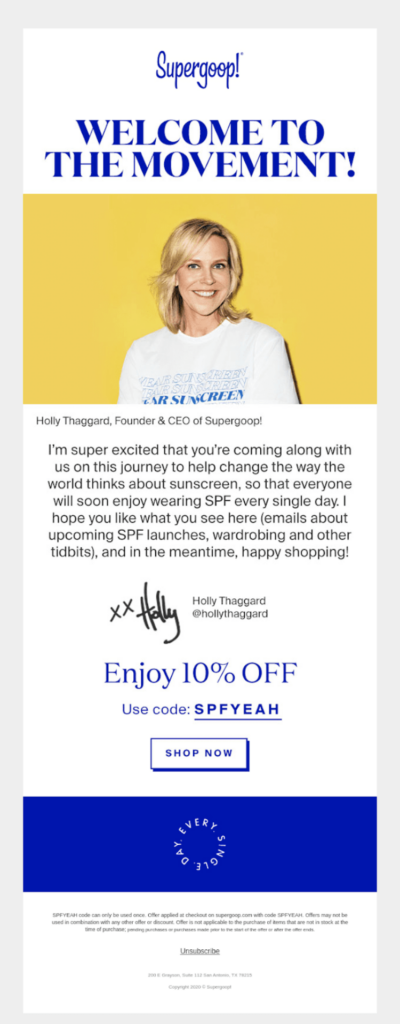
Building a relationship between your brand and your prospects is essential at this stage. You can still offer discounts and sales opportunities — in fact, you probably should, since nearly two-thirds of shoppers will wait for a discount to make a purchase.
The key is not to be too pushy with these offers. Frame your offer emails as friendly notifications, not spammy or salesy marketing messages.
In the example below from American Giant, the discount is part of a larger welcome message. And the “Learn More” call-to-action (CTA) makes the email seem less transactional.
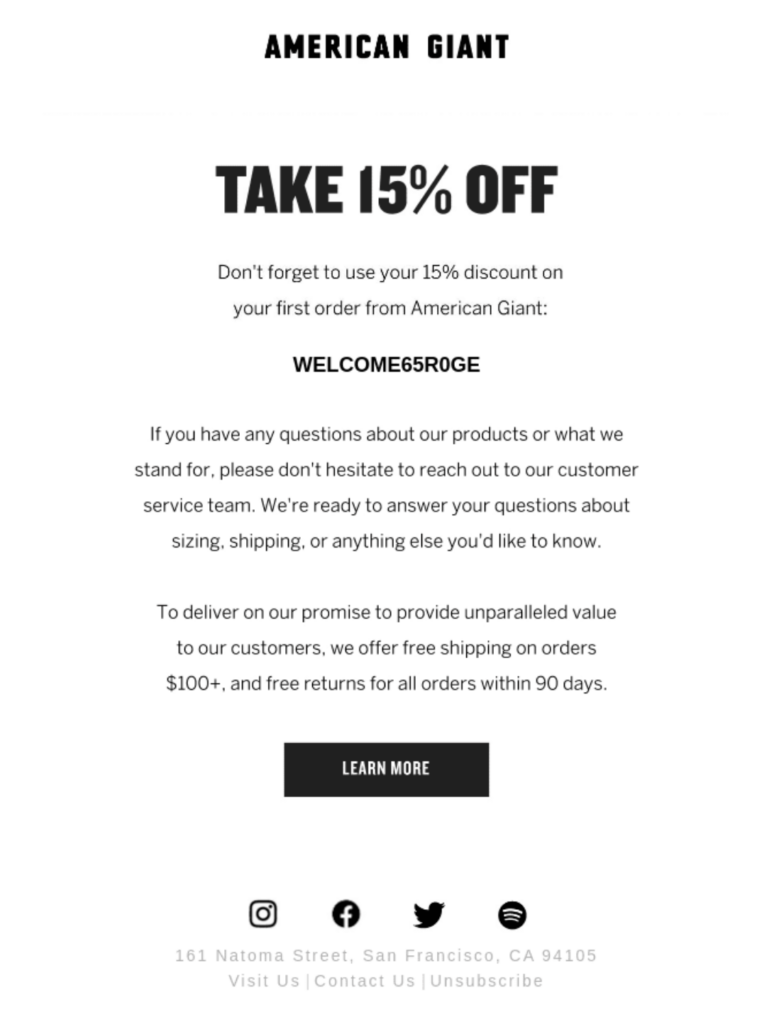
Felina’s email provides resources and inspiration for below the discount CTA at the top:
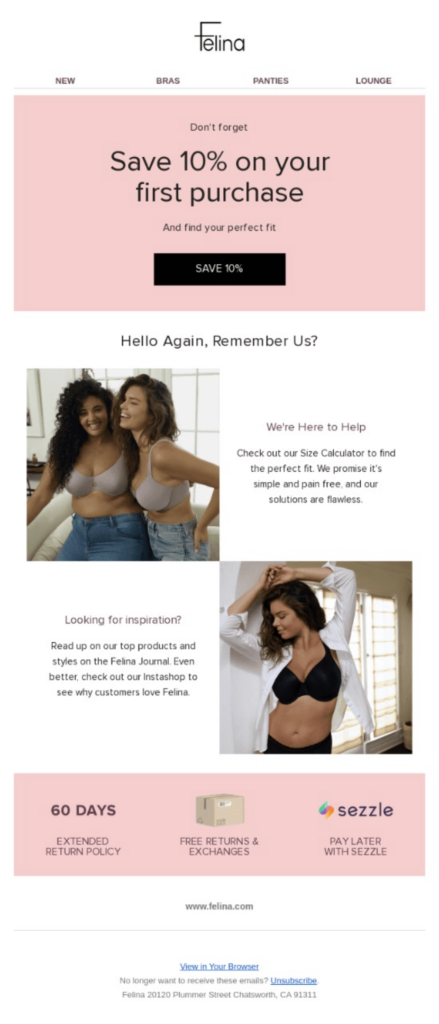
Discounts and brand information aren’t the only options for your emails at this stage. You can also suggest subscriber actions like following your brand on social media. This gives you another connection point to reach customers outside of their inboxes.
Building relationships is key to brand loyalty, which means giving your subscribers an opportunity to get to know you before they’re comfortable buying. If you do it right, your patience will be rewarded.
On that note, remember that folks can spend a lot of time — days, weeks, even months — in the consideration stage. That isn’t a problem as long as you keep sending relevant messages that bring your prospects closer to buying.
You can also track your messages and refine your email marketing strategy according to which messages perform best.
Decision: The Final Push to Make a Purchase
Customers at the decision stage are ready to buy. You’ve established the trust that your subscribers need to pull the trigger.
And if your consideration-stage emails aren’t getting the job done, add a sense of urgency to further incentivize a buying decision.
Time-sensitive or limited-stock offers can help drive sales, and so can messages based on a user’s browsing behavior, like the email below from Bellroy. The latter feels more personal than a templated sales message — even if the email itself is a template.

Similarly, limited-time offers like this Haus message are extremely effective for eCommerce.

If these decision-focused emails don’t convert your subscribers the first time around, don’t give up. Some buyers might be looking for more substantial discounts or more personalized offers before committing.
Use email analytics, as well as old-fashioned trial-and-error, to determine which messages are performing best.
The Post-Purchase Buyer's Journey
The buyer’s journey doesn’t have to end when you make a sale. In fact, it shouldn’t.
Acquiring new customers costs quite a bit more than selling to the ones that you already have. And returning customers usually spend about three times more than a new buyer.
That’s why it’s so important to keep sending messages to buyers, not just prospects. And with email automation in place, it’s easy too.
The post-purchase emails below are designed to keep existing customers engaged with personalized offers and discounts, loyalty and referral bonuses, and requests for reviews or testimonials. Each one keeps your brand top-of-mind and encourages buyers to return. This Bellroy email is another great example!

You can also make recommendations for future purchases based on customers’ buying history. And with Sendlane’s marketing automation, you can do all of the above.
From tracking customer behavior to timing your campaigns to perfection, Sendlane’s easy-to-use platform allows you to build email campaigns that line up beautifully with your buyer’s journey.
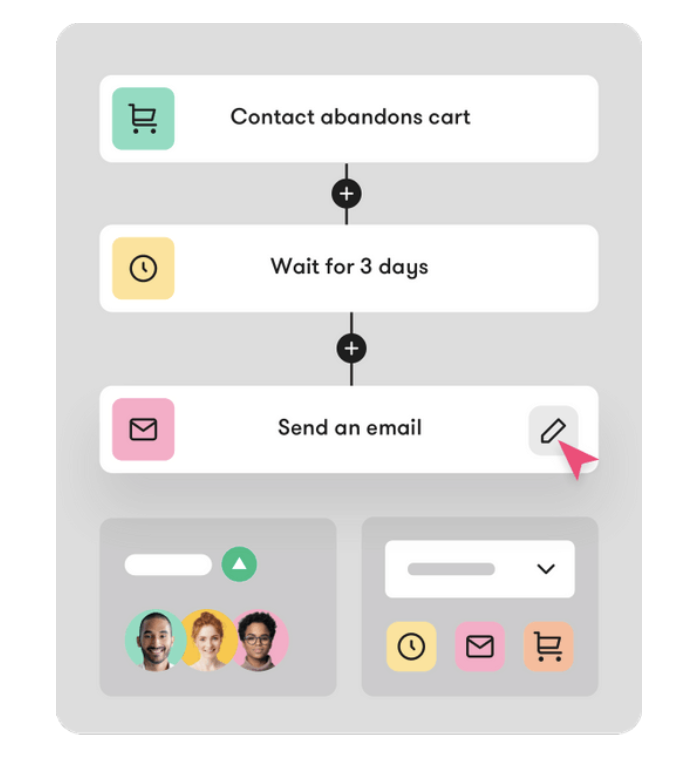
As you send more campaigns, it gets even easier to optimize them. Further, Sendlane’s drag-and-drop tools make building and updating campaigns a cinch, even if you aren’t familiar with email automation.
Mapping out Your Buyer's Journey with Emails
As we mentioned earlier, planning your buyer’s journey might seem difficult, but it doesn’t have to be.
And if you’re leveraging email marketing tools like Sendlane, it’s even easier. All you have to do is build your campaigns and automation rules to continually nurture your prospects until they convert.
If you’re ready to take Sendlane for a spin, sign up for your 14-day free trial!





